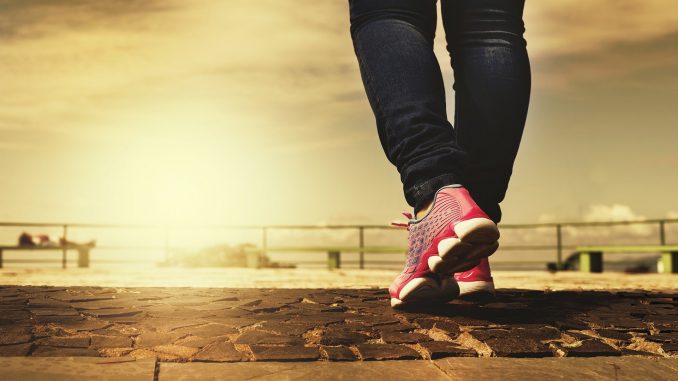
In times of crisis, managing stress effectively is more important than ever.
Studies show that daily exercise can reduce anxiety and stress by as much as 40%!
Regular exercise can improve both your mental health and your physical health. And even with a small amount of activity, you can start to feel the benefits very quickly.
It’s recommended that you take part in at least thirty minutes of physical activity every day. However, any amount of exercise is beneficial. So, if you’re worried that you won’t be able to reach the target, doing some is better than none. You can even start off doing small amounts, then gradually build up the strength to do more.
Different types of exercise
There are lots of different reasons to exercise, and this will affect which type of exercise you want to take part in. Maybe you want to relieve stress. Or maybe you want to improve your overall fitness, or build muscle strength.
Each type will benefit you in different ways.
There are three main types of exercise, each offering their own set of advantages. These are:
- Aerobic exercise
- Strength exercise
- Flexibility exercise
You can focus on one area, or take part in a mixture of the three, depending on your needs and your fitness goals.
Let’s take a look at each type, and how they can help you.
Aerobic exercise
Adding some aerobic exercise into your routine is good for your overall fitness, and helps to promote a healthy heart and lungs, as well as strong muscles.
When combined with a healthy diet, it’s also the best way of losing weight and maintaining it.
Some types of aerobic exercise you can try are:
- Swimming
Swimming is a good all-round exercise and can be used to tone your whole body without putting any pressure on your joints.
- Cycling
Cycling can benefit you by improving your overall fitness. It’s also good for your upper leg muscles, and can help you get around a lot faster than walking.
- Walking
Walking is an aerobic exercise that anyone can enjoy, regardless of their age and fitness level. It’s the perfect choice if you’re a beginner, too.
- Running
If walking isn’t strenuous for you, then walking burns more calories and is an easy way to improve your fitness and lose weight. You don’t need any equipment, and it’s a great way to get fit.
Strength (resistance) exercise
Strength training, or resistance training, involves working your muscles to build strength, posture and balance.
Some of its other benefits include:
- It can help you to maintain healthy blood pressure
- It helps to keep your bones healthy
- Having more muscle burns more calories, making it easier to lose weight
To do resistance training, you can use free weights or dumbbells, rubber bands, weight lifting machines, or your own body weight – for instance, doing press-ups.
Flexibility exercise
To stay active and mobile, it’s important to work on your flexibility. It can improve your balance, core strength, and help you to tone and strengthen your muscles.
Flexibility exercises tend to involve slow stretches. These work on stretching out your muscles with low-intensity movements, which avoid sudden jerking or bouncing.
Some examples of this would be:
- Yoga
- Tai Chi
- Pilates
- Qigong
These focus on stretching your body into different positions, and gently build on your balance, suppleness, and flexibility. They also help you to relax and practice mindfulness.
How often you choose to do these exercises depends on your goals. Some people choose to do them every day, but if you want to do them less often, you will still be able to feel some benefits from them.


Leave a Reply